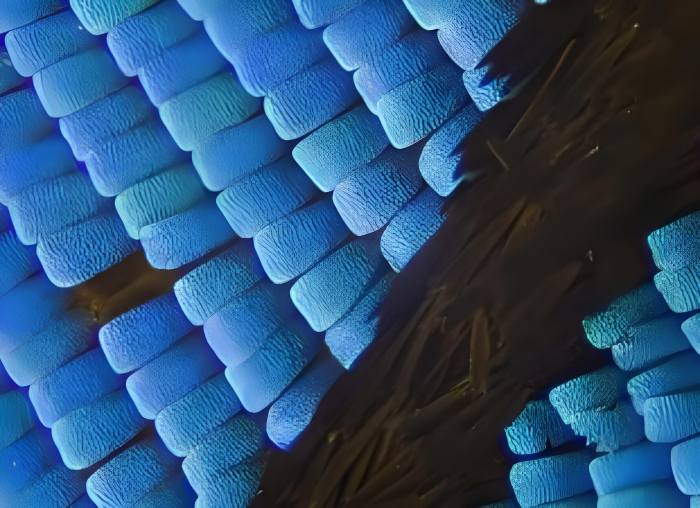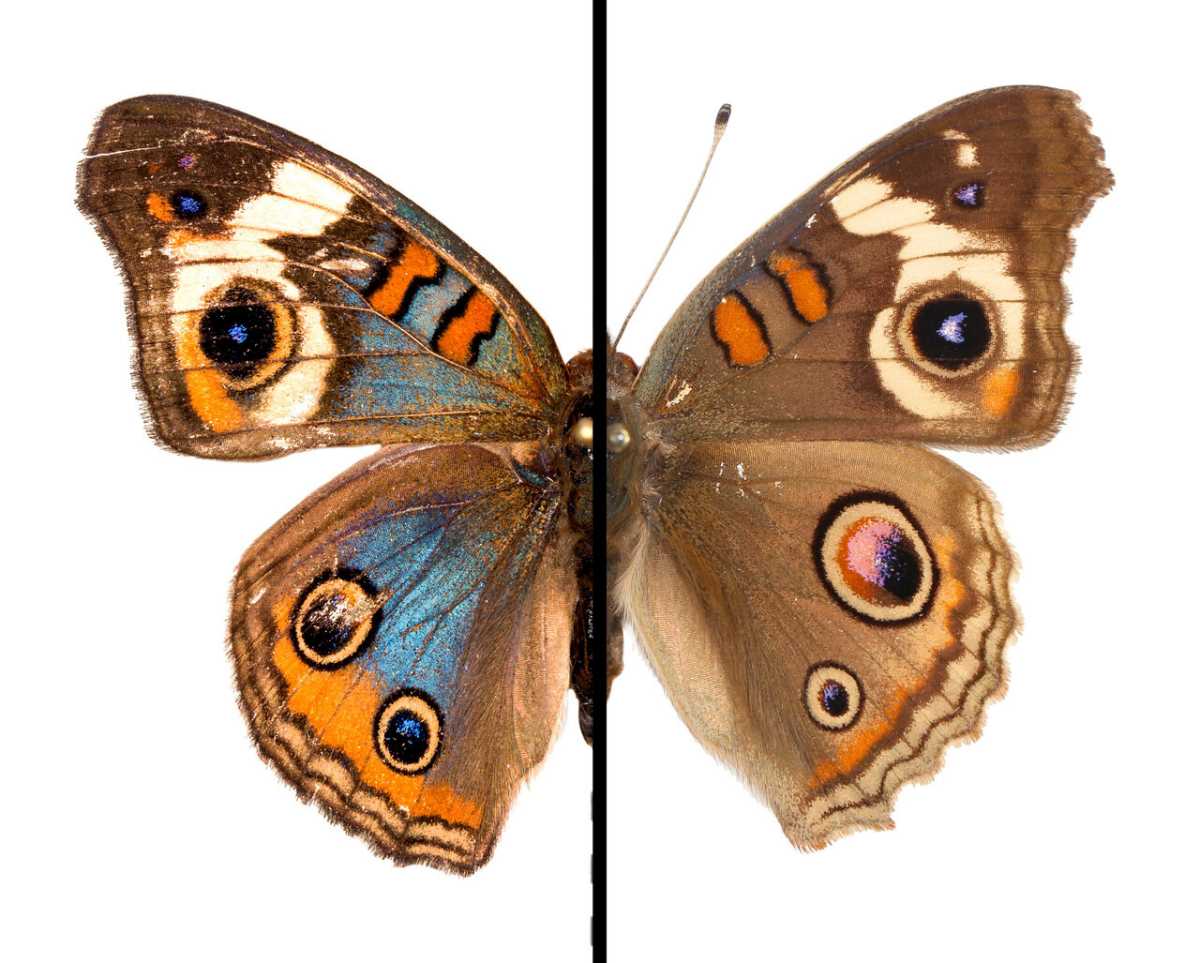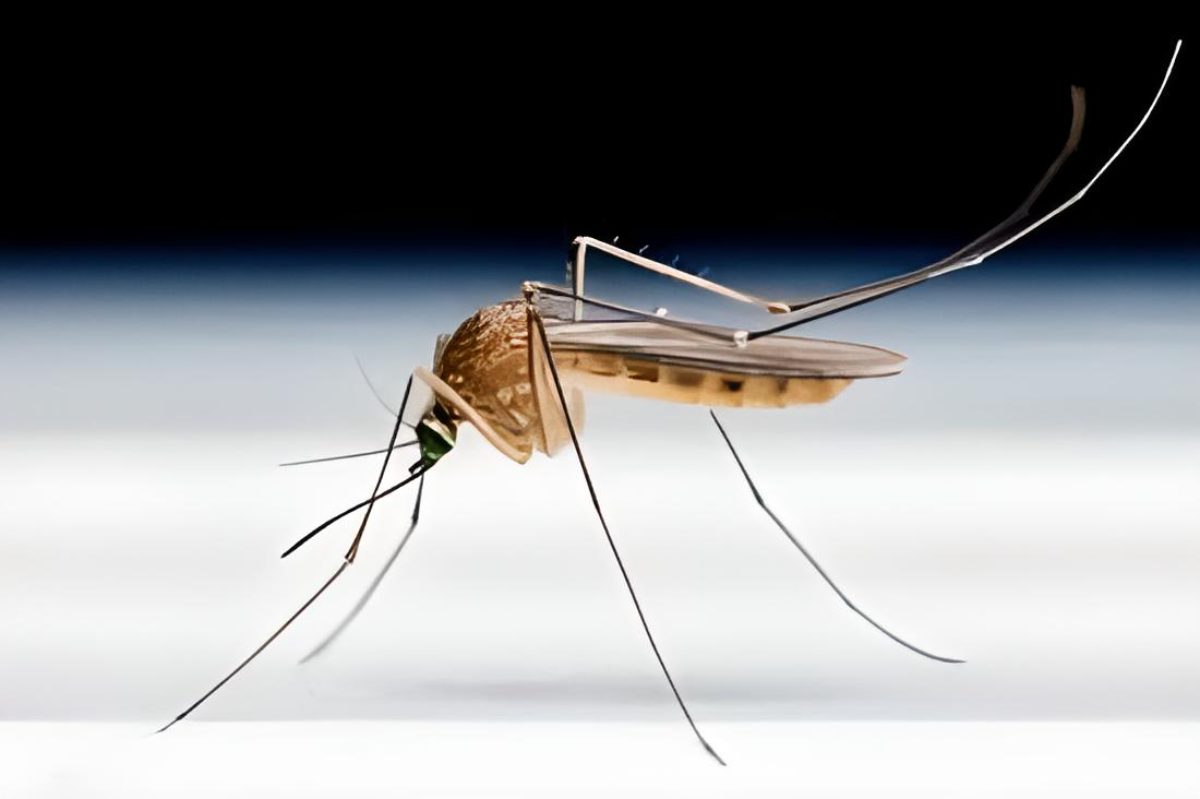Some of nature’s most eye-catching displays of color may be seen on the wings of butterflies. They have spots that are green, blue, or red, and they appear to change color as they move. Morpho rhetenor is a butterfly native to tropical regions with a brilliant blue coloration that can be seen from more than half a mile away. The work of British physicist Peter Vukusic has led to this conclusion. But where does this brilliant glow exactly come from?
Pigments are what give flowers, fur, and most other common items their colors. They seem to be different colors because they reflect just part of the visible spectrum. But butterflies and the ones that glisten in the sunlight are different from other insects. Most of the time, they lack any visible pigments. But what causes them to glow in the first place?
The famous scientist Isaac Newton began to suspect something was amiss as early as 1672. As far as he could tell, insects use small physical structures to influence light. We now know that the anatomy of a butterfly’s wing holds the key to understanding the iridescent colors it displays.
Reminiscent of Roof Shingles

Butterflies have thousands upon thousands of tiny, overlapping scales covering their wings. These scales are 1–3 micrometers thick and laid out in a pattern reminiscent of roof shingles. Each scale is constructed from a number of very thin layers of keratin. The protein keratin is also found in hair and fingernails. There is a minimal amount of space between each keratin layer.
The topmost of these transparent layers reflect some of the light that penetrates them. Keratin is penetrated by the rest. Another portion of the light is reflected from its underside as it travels through the air. Light waves that are reflected from the wing undergo a little redistribution as a result of this offset reflection. The two reflected waves no longer have parallel troughs (dips) and crests (peaks).
Scientists liken it to the action of waves on a small channel between two harbors: Sometimes a bigger wave is formed when the crests of two waves collide. And sometimes a crest and trough cancel each other out.
The nanostructure of the scales on a butterfly wing makes some colors and wavelengths of light more intense than others.
Butterfly Colors Change Due to Directional Reflection
However, the wing scales are capable of doing more, since each individual layer selectively emits the reflected light. That’s why the butterfly wing might seem brilliant blue one moment and subtly green the next time you look at it.
Generally speaking, pigment colors don’t shine very brilliantly due to their inefficient light reflection. By reflecting light in a specific fashion, structural colors like the ones seen on butterflies may achieve extremely high and varying intensities. Thanks to these, the male butterfly in the morphed form can still attract females from hundreds of feet away with its dazzling blue display.






